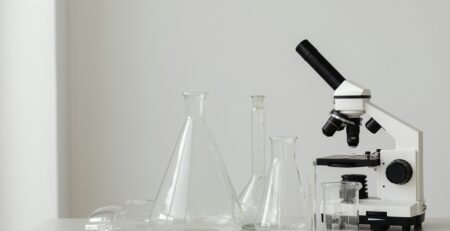4
Sep
Class A vs Class B Measuring Cylinders: Which is Right for Your Lab?
Measuring cylinders are essential tools for laboratories, providing a simple and reliable way to measure liquid volumes. But not all cylinders are created equal — accuracy depends on whether the cylinder is Class A or Class B. For Australian schools, universities, and industry labs, understanding this distinction ensures compliance with standards, cost-effectiveness, and reliable results.
What Defines Class A Measuring Cylinders?
Class A measuring cylinders are manufactured to the highest accuracy standards, complying with ISO 4788 and ASTM E1272.
- Tighter tolerances with approximately half the error margin of Class B.
- Often individually calibrated and supplied with certificates for traceability.
- Preferred in analytical chemistry, pharmaceutical labs, and accredited facilities.
- Costlier but essential when precision cannot be compromised.
What Defines Class B Measuring Cylinders?
Class B measuring cylinders meet the same dimensional standards but with wider tolerances.
- Designed for general-purpose use where small variations are acceptable.
- Widely used in teaching labs, industrial settings, and routine tasks.
- More affordable, making them practical for high-volume educational use.
- Provide reliable measurements, though less accurate than Class A.
Why Borosilicate Glass is Preferred
Regardless of class, most high-quality cylinders are made from BORO 3.3 borosilicate glass:
- High resistance to heat, allowing autoclaving and sterilisation.
- Chemical durability against solvents, acids, and alkalis.
- Clarity for accurate reading of graduations.
- Long service life, supporting sustainable laboratory practices.
Comparison Table: Class A vs Class B Measuring Cylinders
| Feature | Class A Cylinders | Class B Cylinders |
|---|---|---|
| Accuracy / Tolerance | Highest accuracy, tight tolerance (ISO 4788) | Lower accuracy, wider tolerance |
| Calibration | Often individually certified | Bulk manufactured, no certificate |
| Best Applications | Analytical labs, pharmaceuticals, QC labs | Education, routine measurements, industry |
| Cost | Higher | Lower |
| Material | BORO 3.3 Borosilicate Glass | BORO 3.3 Borosilicate Glass |
FAQs
Q1: Do schools need Class A measuring cylinders?
Not usually. Class B cylinders provide sufficient accuracy for teaching environments at a lower cost.
Q2: Are Class A cylinders worth the investment for research labs?
Yes. Their tighter tolerances ensure reproducibility and compliance with ISO/ASTM standards.
Q3: How can I tell if a cylinder is Class A or B?
It is usually marked on the glass near the graduations. Class A cylinders may also include calibration certificates.
Q4: Are both Class A and Class B cylinders autoclave-safe?
Yes, if made from BORO 3.3 glass, both types can withstand autoclaving.
References
- ISO 4788: Laboratory Glassware — Graduated Measuring Cylinders.
- ASTM E1272: Standard Specification for Laboratory Glass Graduated Cylinders.
- ISO 3585: Borosilicate Glass 3.3 — Properties and Standards.
- University of Melbourne Analytical Chemistry Guidelines.
- NIST Chemistry WebBook, National Institute of Standards and Technology.

